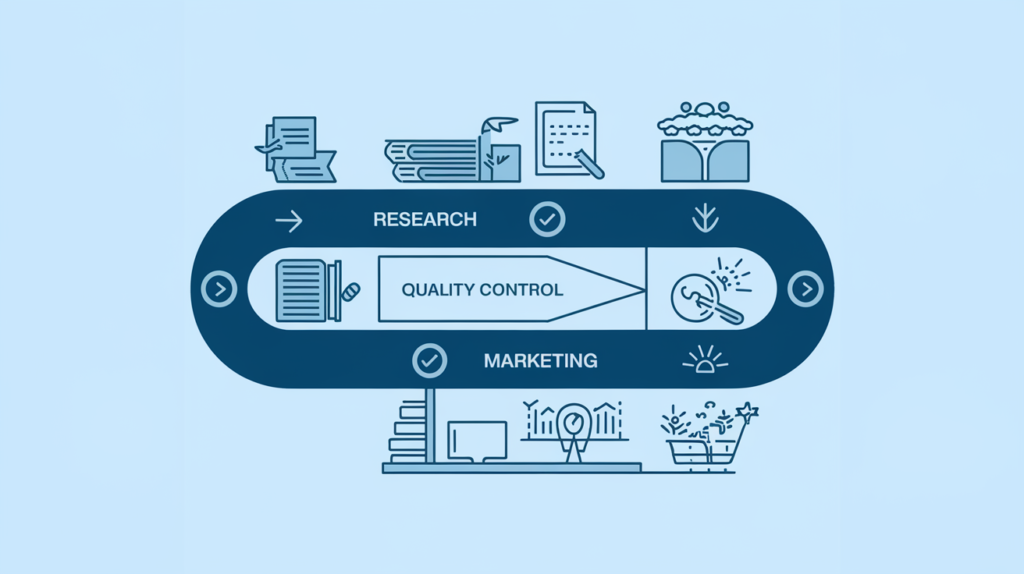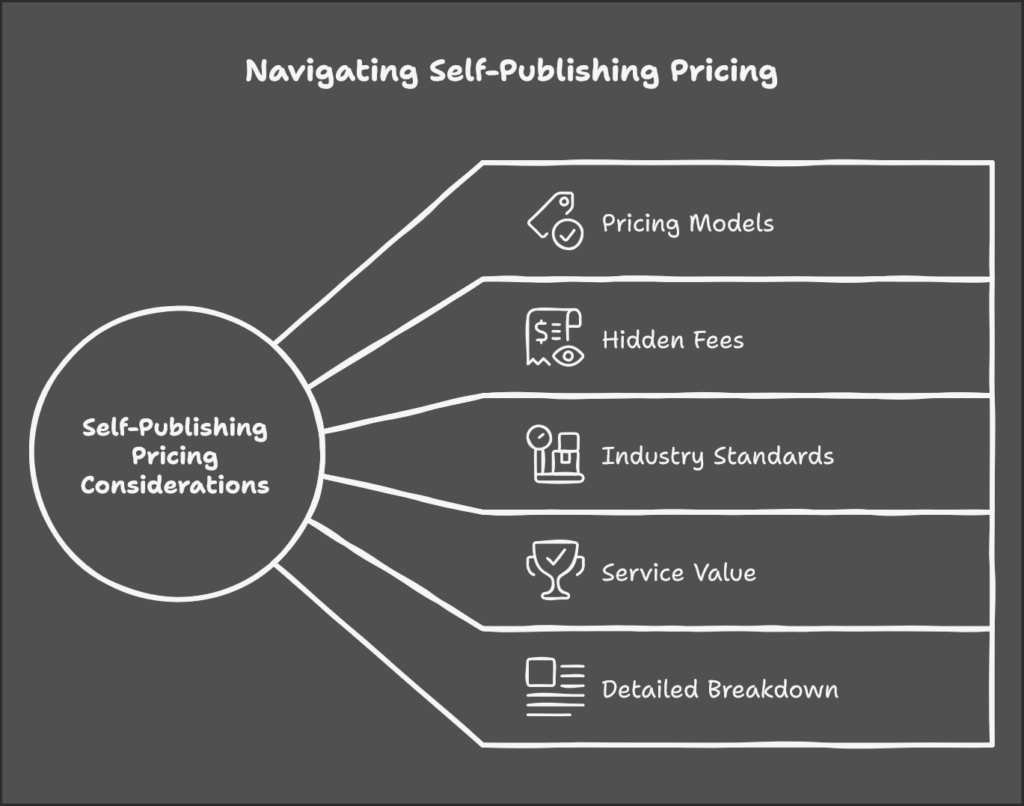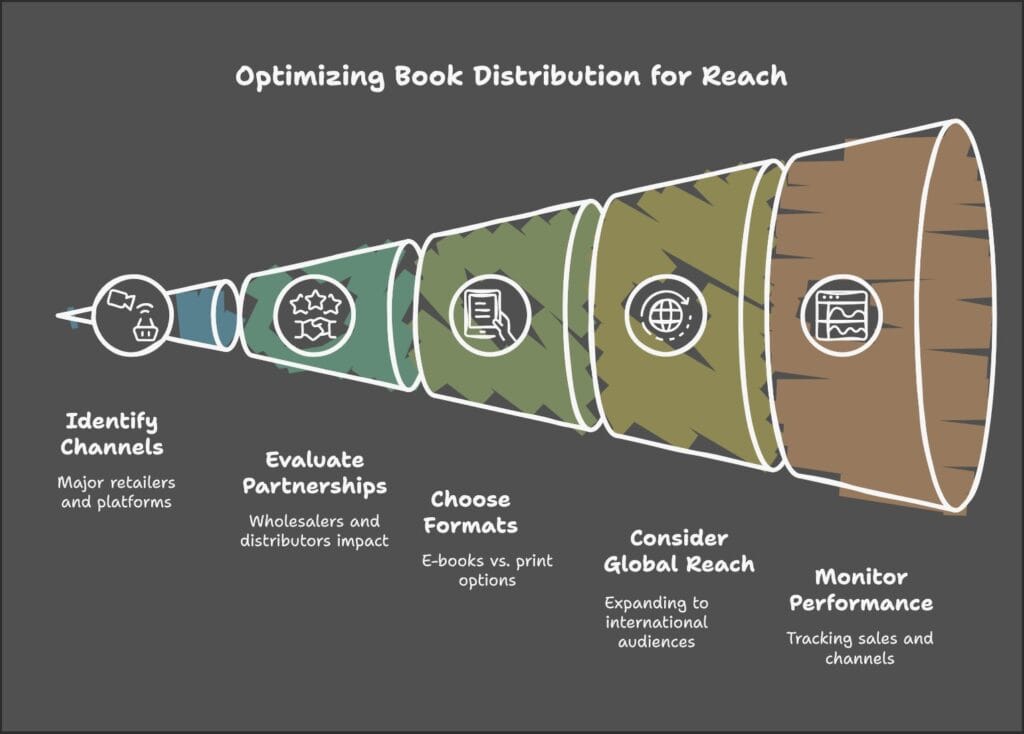Self-publishing can be a daunting journey, but taking your time is crucial for success. Start by researching various self-publishing services to find one that aligns with your needs and values ethical practices. It’s important to select reputable providers; resources like the Alliance of Independent Authors can help you identify trustworthy options. Read customer reviews carefully, as they reveal valuable insights about reliability. Understand pricing clearly to avoid hidden fees and evaluate if the service covers vital aspects like editing and design. Also, stay involved in decisions about your book’s presentation and maintain open communication with your publisher to foster collaboration.

1. Research Self-Publishing Services
Before diving into self-publishing, it’s essential to research the various services available. The self-publishing landscape is vast, with numerous companies offering different packages and support levels. Start by identifying the specific needs of your novel, such as editing, cover design, formatting, and distribution. This will help you narrow down your options. Look for companies that have positive reputations and are known for adhering to ethical standards. Resources like the Alliance of Independent Authors (ALLi) can provide insights into trustworthy self-publishing partners. Additionally, make sure to consider the specific features each service offers and how they align with your goals as an author.
2. Choose Reputable Services
When selecting self-publishing services, it’s crucial to choose providers who exhibit integrity and transparency. Look for companies that have established a reputation for quality and ethical practices. Organizations like the Alliance of Independent Authors (ALLi) can be invaluable for identifying trustworthy partners in the self-publishing landscape. They offer resources and recommendations to help authors make informed decisions about the services they engage with.
For instance, if you’re considering a company for editing services, check if they have professional affiliations or certifications. A company that is transparent about their process and provides clear information on their team’s credentials can give you confidence in their ability to deliver quality work.
Additionally, don’t hesitate to ask questions about their practices. A reputable service should be willing to discuss their methods and how they ensure quality in their offerings. Engaging with services that prioritize these values will help you avoid potential pitfalls and enhance the overall quality of your published novel.
3. Read Reviews and Testimonials
Reading reviews and testimonials is crucial when choosing self-publishing services. Start by checking online platforms where authors share their experiences, such as Goodreads, Amazon, or dedicated author forums. Look for detailed feedback about the service provider’s quality, reliability, and customer support. For instance, if multiple authors mention delayed responses or poor editing, it’s a red flag. Conversely, positive reviews highlighting excellent communication or top-notch design can indicate a trustworthy partner. Additionally, pay attention to testimonials from authors similar to your genre or niche, as their experiences may resonate more with your needs. Evaluating a range of opinions helps you make a well-informed decision, ensuring that you select a service that aligns with your goals.

4. Understand Pricing Structures
When self-publishing a novel, understanding the pricing structures of various services is crucial. Look for clear and upfront pricing models, ensuring there are no hidden fees that could surprise you later. For example, some services might advertise a low initial cost but charge extra for essential services like editing or cover design. It’s wise to compare these costs against industry standards to ensure you’re not being overcharged. Additionally, consider the value you’re getting for the price. A higher price might be justified if the service offers comprehensive support and high-quality outputs. Always ask for a detailed breakdown of what is included in the pricing to make informed decisions.
| Service Provider | Features | Pricing | Reputation |
|---|---|---|---|
| Service A | Editing, Design, Marketing | $500 | Excellent |
| Service B | Editing, Design, Formatting | $300 | Good |
| Service C | Design, Distribution | $400 | Fair |
| Service D | All-Inclusive | $600 | Excellent |
5. Evaluate Service Offerings
When choosing a self-publishing service, it’s crucial to evaluate their offerings thoroughly. Look for a provider that covers all aspects of the publishing process, including editing, design, formatting, and distribution. For example, if a service only offers basic editing or formatting, it may leave you with a subpar final product. Additionally, consider services that provide multi-format availability, allowing your book to be available as an eBook, paperback, and even audiobook. This flexibility caters to different reader preferences and can expand your reach. A comprehensive package not only saves you time but also ensures that all elements of your book are cohesive and professionally handled.

6. Maintain Control Over Your Rights
As a self-published author, it’s crucial to retain ownership of your book and its related rights. Before signing any agreements, carefully review the terms to ensure you are not giving away your rights unnecessarily. This includes the rights to your manuscript, cover art, and any adaptations, such as audiobooks or translations. For example, some publishing services may require exclusive distribution rights, which could limit your ability to sell your book elsewhere. Always weigh the benefits and drawbacks of such agreements. By maintaining control over your rights, you can make informed decisions about how and where your work is published and marketed, ensuring that you benefit fully from your creative efforts.
7. Focus on Quality
When self-publishing a novel, prioritizing quality is crucial for standing out in a crowded market. This means investing in professional editing, eye-catching cover design, and a polished layout. For instance, a well-edited book not only minimizes errors but also enhances readability, making a better impression on potential readers. Additionally, a professional cover design can capture attention and convey the genre and tone of your story effectively. Consider famous self-published books that gained popularity due to their high production values, such as “The Martian” by Andy Weir, which showcases how quality can lead to success. Remember, a well-produced book is more likely to receive positive reviews and recommendations, which are essential for long-term success.
8. Get Involved in the Process
As the author, your involvement in the self-publishing process is crucial. Don’t leave everything to your service provider. Take an active role in decisions about your book’s cover design, layout, and marketing strategies. For example, if you have a specific vision for your book cover, communicate it clearly, and provide examples of what you like. This partnership approach ensures that your vision is represented accurately.
Additionally, being engaged in the marketing strategy can significantly affect your book’s success. If the service provider suggests a marketing tactic that doesn’t resonate with you or your audience, speak up. Collaborate to find strategies that align with your style and goals. Remember, it’s your book, and your insights as the author are invaluable.
9. Establish Clear Communication
Clear communication is vital for a smooth self-publishing experience. From the initial stages of your project to the final launch, ensure that your service provider keeps you informed. Regular updates can help you stay on track and make necessary adjustments. For instance, if you’re not satisfied with a draft cover design, it’s crucial that your provider is responsive and open to feedback. Establishing preferred methods of communication—whether through emails, calls, or project management tools—can help in maintaining clarity. This ensures that both you and the service provider are aligned in vision and expectations, minimizing misunderstandings that could derail your project.
10. Prepare for Marketing and Promotion
Marketing and promotion are crucial to your book’s success, so it’s important to start thinking about them early. Discuss marketing strategies with your publishing service from the get-go, and ensure they provide more than just basic promotional materials. Look for comprehensive marketing plans that include social media outreach, email campaigns, and author events. For example, a successful self-published author might create a launch plan that involves building an email list, engaging on platforms like Instagram or TikTok, and even setting up a virtual book tour. Evaluate the effectiveness of their suggested activities and be open to adjusting your strategy based on what resonates with your audience. Remember, your book’s visibility is key; if readers don’t know it exists, they can’t buy it.
- Identify your target audience
- Create a marketing plan
- Utilize social media platforms
- Build an author website
- Network with other authors
- Offer promotions and giveaways
- Consider book launch events
- Collaborate with bloggers and influencers

11. Understand Distribution
Understanding distribution is essential for maximizing the reach of your self-published novel. Start by clarifying how your book will be distributed and through which channels. Many self-publishing platforms offer options to distribute your book to major retailers like Amazon, Barnes & Noble, and independent bookstores. It’s important to ask about their agreements with wholesalers and distributors, as these partnerships can significantly impact your book’s visibility.
For example, if you choose a platform that has strong connections with large distributors, your book may end up in libraries and bookstores nationwide, increasing your potential readership. Conversely, a service with limited distribution may restrict your book to just a few online platforms.
Also, consider the different formats available for distribution. E-books are popular, but print on demand (POD) options can help you reach readers who prefer physical copies without upfront printing costs. You should also inquire about global distribution if you want to reach international audiences.
Finally, keep an eye on how your book is distributed over time. Some platforms allow you to track sales and distribution channels, providing insights into where your book is performing best and helping you refine your marketing strategies.
12. Be Wary of Overpromises
When choosing a self-publishing service, it’s essential to be cautious of providers who make exaggerated claims about their potential to boost your book’s sales or market presence. Some companies may promise that your book will become a bestseller or reach a vast audience without providing any concrete evidence or realistic strategies. Instead, look for services that set achievable goals and provide a clear plan on how they intend to help you succeed. For example, a reputable service might outline specific marketing channels they will use, such as social media campaigns or targeted email newsletters, rather than vague assertions about becoming an overnight success. Always ask for case studies or examples of previous authors they have worked with, so you can gauge the effectiveness of their methods.
13. Stay Informed
Staying informed about the self-publishing landscape is crucial for any author looking to succeed. Regularly read blogs, join online forums, and participate in workshops related to self-publishing. Websites like Writer’s Digest and The Creative Penn offer valuable insights into the latest trends and best practices. Additionally, consider enrolling in online courses that cover various aspects of self-publishing, from marketing strategies to understanding digital distribution. Engaging with author communities on platforms like Facebook or Goodreads can also provide firsthand experiences and advice. By keeping your knowledge up to date, you can make informed decisions that enhance your book’s visibility and appeal in a competitive market.
14. Take Your Time
Rushing through the self-publishing process can lead to mistakes that hurt your book’s success. It’s vital to take the time to refine every aspect of your work. This includes multiple rounds of editing, thoughtful cover design, and comprehensive marketing strategies. For example, consider taking a few extra weeks to revise your manuscript after feedback from beta readers. This can make a significant difference in the quality of your final product. Additionally, don’t feel pressured to publish on a specific date just because it seems convenient. Instead, focus on creating a polished book that truly reflects your vision. Remember, taking your time now can lead to better reviews, more readers, and ultimately greater success in the long run.
Frequently Asked Questions
1. What should I consider before self-publishing my novel?
Before self-publishing, think about your target audience, the editing process, cover design, and how you’ll market your book.
2. How can I make sure my novel is ready for self-publishing?
To ensure your novel is ready, have it edited by professionals and beta readers, and consider getting feedback to improve the story.
3. What are the benefits of self-publishing over traditional publishing?
Self-publishing gives you full control over your work, faster publication timelines, and the ability to keep more profits from your book sales.
4. How do I promote my self-published novel effectively?
To promote your book, use social media, create an author website, network with other authors, and consider book signings or virtual events.
5. What formats should I consider when self-publishing my novel?
You should consider both eBook and paperback formats to reach a wider audience, as different readers have different preferences.

